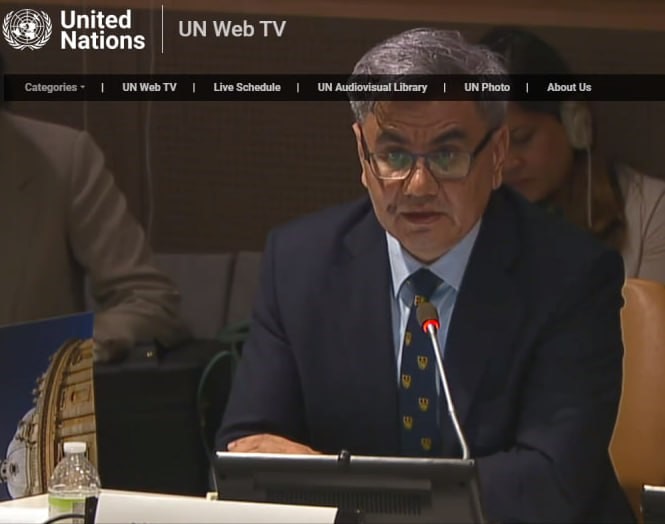


On September 20, 2023, a high-level conference was held at the UN Headquarters in New York within the framework of the UN General Assembly on the topic: "Leveraging the Multidimensional Poverty Index to Topple Interlinked SDGs", organized by the Multidimensional Poverty Peer Network (MPPN) and the Oxford Poverty and Human Development Initiative (OPHI).
The purpose of the event was to put the problem of poverty at the center of the discussion, as well as to stimulate action and develop cooperation to develop sustainable solutions that have a greater impact on people living in poverty and contribute to the well-being of the whole society.
Director of the Center for Economic Research and Reforms (CERR) Obid Khakimov made a report at the high-level event.
In his speech, the head of CERR noted that in recent years the government of Uzbekistan has made significant progress in solving the problem of poverty within the country. Uzbekistan is a country with a lower–middle income and a population of more than 36 million people. In 2022, approximately 14% of the population, which is about 5.4 million people, lived in poverty.
The solution to the problem of poverty also includes the adoption of the Strategy "Uzbekistan – 2030", which aims to reduce poverty by 7% by 2030. In addition, the approved Social Protection Strategy outlines plans to create a system that provides a minimum level of social protection for all citizens.
«This will be achieved by expanding the coverage and increasing the targeting of social assistance. Today, all social protection mechanisms are integrated within the newly established National Social Protection Agency in accordance with the guidelines of UNDP and UNICEF», — noted O.Khakimov.
In addition, in order to accelerate progress towards achieving the Sustainable Development Goals, in particular Goal 1, which is aimed at the widespread eradication of poverty in all its forms, the Government of Uzbekistan has recognized the problem of multidimensional poverty and has set the development of this indicator as one of the highest priorities. So, the national poverty line is based on minimum consumer spending.
During the speech, it was noted that currently in partnership with UNDP, UNICEF, Innocenti UNICEF and the Oxford Poverty and Human Development Initiative, Uzbekistan has initiated a pilot project to measure the Multidimensional Poverty Index (MPI). This work is aimed at a comprehensive analysis of the scale and depth of poverty, including child poverty, in the context of Uzbekistan.
The Director of the CERR told the participants of the event that the study included two stages: the first survey was conducted in 2022 among 1,500 households, where a definition of multidimensional poverty was developed.
In 2023, data was collected from 4,515 households, focusing on various socio-economic factors affecting the well-being of the people.
«These factors include education, employment, health, social protection, standard of living, access to information, nutrition, and so on. All the questions were carefully adapted to the specific context of Uzbekistan, which allowed us to develop an indicator that accurately reflects the unique aspects of deprivation in the country», — noted O.Khakimov.
Speaking about indicators of multidimensional poverty, it was noted that MPI includes 13 indicators grouped by 3 dimensions of well-being:
«The preliminary results of the MPI study give us a complete picture of poverty in our country. To solve this problem, the Strategy "Uzbekistan – 2030" defines key goals, such as doubling the country's GDP and increasing the incomes of 4.5 million people at risk of poverty», — noted O.Khakimov.
During the speech, it was noted that the Strategy emphasizes social obligations related to the further development of the education system, including the expansion of pre-school education coverage and a minimum of 50% level of enrollment of young people in higher education institutions.
In addition, the priority is the development of the healthcare sector by doubling the financing of healthcare and achieving 100% digitalization of medical institutions.
In conclusion, O.Khakimov noted that the Strategy is aimed at ensuring full coverage of social protection for those in need and reducing the unemployment rate to 7% by providing stable and effective employment opportunities for everyone, including young people and people with disabilities.
Therefore, MPI will serve as a barometer of real changes within the country over the next 7 years.
CERR Public Relations and Media Sector